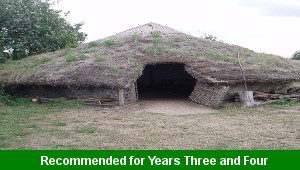Home > Key Stage Two > English > Reading > Comprehension
1914, Wilfred Own

This English teaching pack for Key Stage Two gets the children to read and answer comprehension questions about a classic poem illustrating life during the first world war from the view of a soldier.
The class can identify and describe how poets express ideas, moods and feelings in a poem by using different forms of figurative language and special vocabulary choices.
Download this teaching pack including a shared reading test, classroom activities and an interactive presentation to teach the children to read and answer comprehension questions about a classic poem illustrating life during the first world war from the view of a soldier
Activities in this teaching pack include a shared reading text of a poem written by a soldier describing life in the first world war, a worksheet to answer key questions about the structure and content of the poem, worksheet to define the meaning of different words in the poem.
The interactive presentation gets the children to identify and describe how poets express ideas, moods and feelings in a poem on a specific topic by exploring a poem about the first world war.
This lesson can support development in reading and understanding how poems are structured and formatted and how poets can use different forms of figurative language to illustrate themes in their writing. There are teaching activities for shared learning, differentiated worksheets to support independent learning and interactive presentations to introduce concepts and key skills.
-

Cities, Towns and Villages
Research and present the history of a range of different buildings and people that are part of the local community using a school exhibition
-

Recycling
Research and present some of the benefits and disadvantages that can be produced when recycling different materials at home and in school
-

Viking Pots
Develop and refine a range of different art and design techniques when working with clay to make pots that represent Viking culture and traditions
-

Bronze Age
Research and illustrate how life in Britain developed and changed during the Bronze Age including the growth of communities and trade
